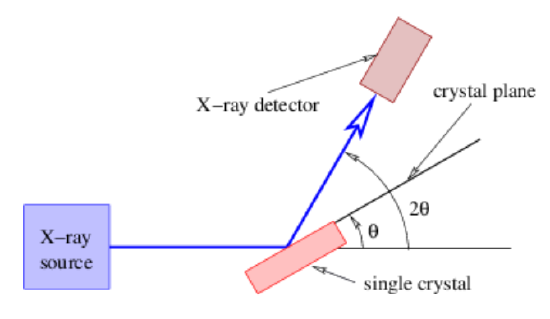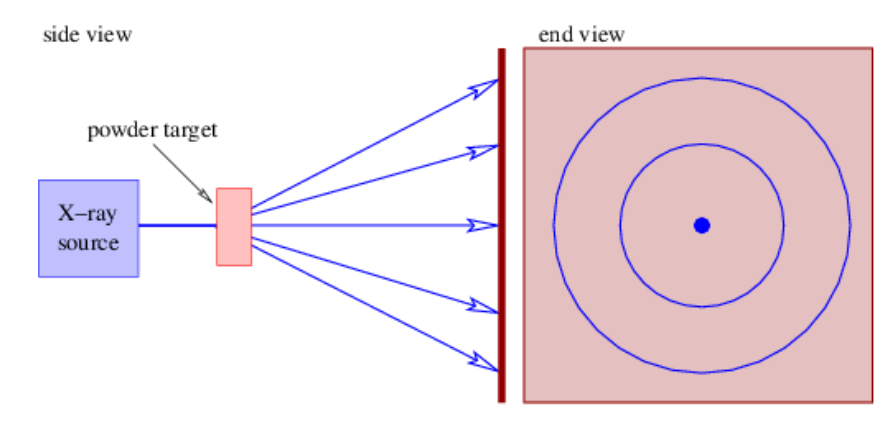7.2: X-Ray Diffraction Techniques
( \newcommand{\kernel}{\mathrm{null}\,}\)
Two types of targets are used in Bragg diffraction experiments: single crystals and powder targets.
Single Crystal

In a single crystal setup, an X-ray detector is mounted as shown in Figure 7.2.2:. A mechanical device keeps the detector oriented so that the angle of incidence equals the angle of reflection for the desired crystal plane. Peaks in the X-ray detection rate are sought as the angle θ is varied.
The advantage of this type of apparatus is that diffraction peaks from only the selected crystal plane are observed.
Powder Target

The powder in a powder target is really a conglomeration of many tiny crystals randomly oriented. Thus, for each possible Bragg diffraction angle there are crystals oriented correctly for Bragg diffraction to take place. The detector is usually a photographic plate or an equivalent electronic device as illustrated in Figure 7.2.3:. For each Bragg diffraction angle one sees a ring on the plate concentric with the axis of the incident X-ray beam.
The advantage of this type of system is that no knowledge is needed of the crystal plane orientations. Furthermore, a single large crystal is not required. However, all possible Bragg scattering angles are seen at once, which can lead to confusion in the interpretation of the results.


